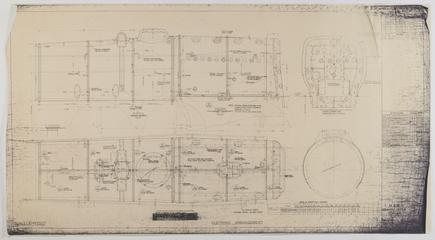
Crewe Locomotive Works
Crewe Locomotive Works was built in 1843 for the Grand Junction Railway, and was taken over by the London & North Western Railway (LNWR) three years later. The largest railway owned works in the world at the time, it was at the forefront of new technology, one of the first to introduce machine tools and a pioneer of the Bessemer steel process. In 1888 a world record had been established there, when the 0-6-0 freight locomotive No 2153 was assembled in only 25½ hours.
In 1862 the LNWR's Northern and Southern locomotive divisions were amalgamated under the control of one superintendent with headquarters at Crewe. For most of the period locomotive running of LNWR was under charge of the locomotive superintendent or chief mechanical engineer although the internal divisions changed.
To facilitate more locomotive repair capacity at Crewe after the amalgamation of the Northern and North Eastern division, coach building was transferred to Saltley, Birmingham in 1859, following this it was concentrated at Wolverton. Gradually the coaching shop at Crewe was given over to locomotive work and all Wolverton’s locomotive building and repair were moved to Crewe.
On grouping in 1923 Crewe Works was taken over by the London, Midland & Scottish Railway, building Stanier engines such as the prestigious Coronation Pacifics in the 1930s. Principal activities were locomotive building and repairing including: all new boilers for standard London Midland & Scottish Railway (LMSR) locomotives; steel castings, drop stampings and heavy forgings for all LMSR works; chair castings and points and crossing manufacture for the Chief Civil Engineer’s Department; manufacture of signals, locking frames and crossing-gate work for the Signal and Telegraph Department. The Works had its own 18” gauge railway using engines such as Billy and Dicky for transporting items around the main workshops.
In 1989 the works was privatised, as part of British Rail Engineering Ltd.